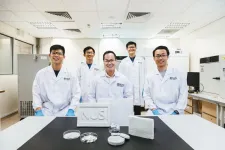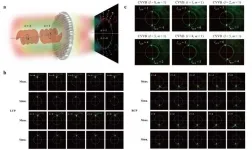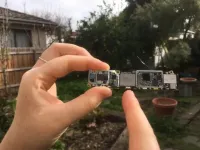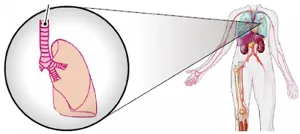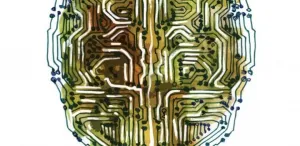(Press-News.org) Metals are one of the most widely used materials in the world - they are used in cookware, tools, electric appliances, electric wires, computer chips, jewelry and so on. With the growing demand for metal products, it is crucial to promote sustainable and environmentally-friendly methods of recycling metal waste to help reduce the environmental impact of using metals in the economy.
The conventional approaches for recycling metal waste are energy intensive and some of these methods also generate environmentally harmful by-products, such as ammonia and methane during aluminium recycling.
To address this challenge, a team of researchers from the National University of Singapore (NUS) has demonstrated a new eco-friendly technique to convert aluminium and magnesium waste into high-value, multi-functional aerogels. This upcycling method could be applied to all types of metal waste in power form, such as metal chips and electronic waste.
"Our approach is cheaper, does not produce any hazardous waste, consumes less energy and is more environmentally-friendly than conventional recycling methods for metal waste. The metal-based aerogels created using our unique fabrication technique have high thermal and mechanical stability. Hence, they are promising candidates for heat and sound insulation in harsh environments with high temperature or high mechanical impact. We are also exploring new uses for such aerogels, such as biomedical applications," explained research team leader Associate Professor Duong Hai-Minh, who is from the NUS Department of Mechanical Engineering.
This latest technological breakthrough achieved by Assoc Prof Duong and his team builds upon their earlier successes in developing aerogels using different types of waste such as plastics, textiles, paper, pineapple leaves and other types of food and agricultural waste.
Simple, low-cost fabrication process
The NUS team has developed a simple fabrication process to create metal-based aerogels. Metal waste is first ground into powder and mixed with chemical crosslinkers. The mixture is heated in the oven, frozen and then freeze-dried to create the aerogel. The process may vary slightly depending on the metal waste involved. On average, it takes about one to three days to transform powdered metal waste into aerogels, compared to three to seven days using conventional methods of producing aerogels.
The simple process also means that metal-based aerogels can be produced at a much lower cost. Using the technique developed by the NUS team, a piece of metal-based aerogel that is 1 sqm in size and 1 cm thick costs less than S$10.50 to produce, half the price of commercially available silica aerogel.
Metal-based aerogels as versatile construction materials
Aerogels are highly absorbent, extremely light, and they have excellent thermal and sound insulation capabilities. In their earlier work, Assoc Prof Duong and his team had shown that the properties of aerogels can be altered by coating them with chemicals - for instance, they can become water repellent or fire resistant.
In their latest work, the NUS team has identified new exciting applications for metal-based aerogels. One promising application is to be used as light-weight construction materials.
"Our aluminium aerogel is 30 times lighter and insulates heat 21 times better than conventional concrete. When optical fibres are added during the mixing stage, we can create translucent aluminium aerogels which, as building materials, can improve natural lighting, reduce energy consumption for lighting and illuminate dark or windowless areas. Translucent concrete can also be used to construct sidewalks and speed bumps that light up at night to improve safety for pedestrians and road traffic," Assoc Prof Duong added.
The translucent aluminium aerogels created by the NUS team is six times lighter, six times better in thermal insulation and 120 times cheaper compared to commercial translucent concrete (LiTraCon).
When coated with a chemical called methyltriethoxysilane (MTEOS), aluminium aerogels can repel water and becomes a self-cleaning construction material which allows dirt or debris to be easily washed away when it comes into contact with water.
Metal-based aerogels are also suitable as fire retardant boards, thermal insulation materials in buildings and piping systems, for absorption of airborne contaminants for indoor environments, and oil-spill cleaning.
Metal-based aerogels for cell cultivation
The NUS team is also looking at using aerogels for biomedical applications.
"We are currently working with a commercial partner to test our aluminium aerogels as microcarriers for cell cultivation. Microcarriers are micro-size beads for cells to anchor and grow. Our first trials were performed on stem cells, using a cell line commonly used for testing of drugs as well as cosmetics, and the results are very encouraging," explained Assoc Prof Duong.
To be used as microcarriers, aluminium aerogels are ground into powder and added to the mixture of cells and growth media (including nutrients, antibiotics and growth supplements). The cells are cultivated at 37 degree Celsius in an incubator for 12 days. The microcarriers are then removed and the cells are harvested for various uses.
"After 12 days of incubation, our experiments obtained a yield of 70%. This is the first successful demonstration of growing cells using aerogels. We need to conduct more studies to optimise the culture conditions and address biocompatibility requirements. This is an exciting development that could open doors to a wider use of aerogels for non-conventional applications such as testing drugs and cosmetics, vaccine development and tissue engineering," Assoc Prof Duong explained.
The NUS team has recently published its work on creating aerogels using aluminium waste in the Journal of Material Cycles and Waste Management on 22 February 2021. Assoc Prof Duong and his team are also in discussion with industry partners to commercialise the technology for fabricating metal-based hydrogels.
In the next phase of their research, the NUS team is also looking at developing metal-based aerogels for applications that require extremely high temperature tolerance, such as for military applications.
INFORMATION:
With inherent orthogonality, both SAMs and OAMs of light have been utilized to expand the dimensions of optical communications and signal processing, wherein unambiguous SAM and OAM identification is one of the significant topics. Conventional sorting approaches suffer from complicated optical setups, multiple bulky devices, repeated projection measurements, and cannot simultaneously distinguish SAM and OAM.
In a new paper published in Light Science & Application, a team of scientists, led by Professor Xiangang Luo from State Key Laboratory of Optical Technologies on Nano-Fabrication and Micro-Engineering, Institute of Optics and Electronics Chinese Academy of Sciences, and co-workers have showed that a single spin-decoupled metasurface that merges the geometric ...
Hand, Foot & Mouth Disease (HFMD) is a generally mild, contagious viral infection common in young children. In Singapore, HFMD is endemic and is most commonly caused by intestinal viruses known as coxsackieviruses and enteroviruses.
While most HFMD patients experience common symptoms such as sore throat, fever, ulcers inside the mouth and blisters and lesions on the palms and soles, infection with Enterovirus-A71 (EV-A71) may lead to serious neurological complications that can be potentially fatal or lead to long-term neurological deficits (cognitive and motor deficits). These complicated HFMD cases are mainly seen in young children.
Researchers from NUS Yong Loo Lin School of Medicine's Infectious Diseases ...
New FLEET research confirms the potential for topological materials to substantially reduce the energy consumed by computing.
The collaboration of FLEET researchers from University of Wollongong, Monash University and UNSW have shown in a theoretical study that using topological insulators rather than conventional semiconductors to make transistors could reduce the gate voltage by half, and the energy used by each transistor by a factor of four.
To accomplish this, they had to find a way to overcome the famous 'Boltzmann's tyranny' that puts a lower limit on transistor switching energy.
They found a surprising result: gate voltage applied to a topological insulator could create a barrier to electron flow larger than the voltage itself times the electron charge, ...
Chronic pain is among the most common chronic conditions in the United States, but estimates of its prevalence and impact vary widely. In 2019, the National Center for Health Statistics of the Centers for Disease Control and Prevention added a new set of questions relating to pain to its National Health Interview Survey (NHIS), a large household-based annual survey that offers valuable insights into the health statuses of U.S. adults nationwide. In an article published in Pain, researchers from Brigham and Women's Hospital and Mass Eye and Ear report that 50.2 million (20.5 percent) ...
Durham, NC - A phase 2 clinical trial whose results were released today in STEM CELLS Translational Medicine might point to a way to overcome bronchopulmonary dysplasia (BPD), a major cause of death in preterm infants. The study, conducted by researchers at Samsung Medical Center, Sungkyunkwan University and Asan Medical Center Children's Hospital in Seoul, evaluates the effectiveness of treating these infants by transplanting umbilical cord blood-derived mesenchymal stem cells (UCB-MSCs) directly into their tracheas.
Early results showed signs of improvement for the most immature infants included in the trial.
BPD is a serious breathing disorder in which the lungs do not develop normally. Most infants who develop BPD are born more than ...
Embargoed press materials are now available for the virtual Experimental Biology (EB) 2021 meeting, featuring cutting-edge multidisciplinary research from across the life sciences. EB 2021, to be held April 27-30, is the annual meeting of five scientific societies bringing together thousands of scientists and 25 guest societies in one interdisciplinary community.
Complete a Press Registration Form for complimentary meeting registration and full access to our virtual newsroom. We encourage advance registration as it may take up to a day to receive access.
Join Our Virtual Press Conference
Reporters are invited to join a live Q&A discussion of selected research announcements during a virtual EB press conference held ...
Eyes play an important role in social communication by expressing the intentions of our interlocutors, and even more so in times of pandemic when half of the face is hidden. But is this eye contact automatic and rapid? Is it based on a priority attentional reaction or, on the contrary, on a particular emotional reaction? To answer these questions, researchers at the University of Geneva (UNIGE), Switzerland, looked at the way we process human gaze, focusing on the estimation of the temporal duration of social interactions. They discovered that when we make eye contact with another person, our attention is directly solicited, causing a distortion in our temporal perception. As a result, time seems shorter than it really is. ...
A biomimicking "spiking" neural network on a microchip has enabled KAUST researchers to lay the foundation for developing more efficient hardware-based artificial intelligence computing systems.
Artificial intelligence technology is developing rapidly, with an explosion of new applications across advanced automation, data mining and interpretation, healthcare and marketing, to name a few. Such systems are based on a mathematical artificial neural network (ANN) composed of layers of decision-making nodes. Labeled data is first fed into the system to "train" the model to respond a certain way, then ...
LA JOLLA, CALIF. - April 20, 2021 Scientists at Sanford Burnham Prebys have identified, at an atomic level, how a part of a protein called PLEKHA7 interacts with a cell's membrane to regulate important intercellular communications. The research, published in the journal Structure, points to hotspots within PLEKHA7 as targets for drugs. These targets could be key in designing treatments for advanced colon, breast and ovarian cancers.
The region, or domain, in PLEKHA7 that the researchers examined, pleckstrin homology (PH), is commonly found in proteins ...
A long-awaited, high-tech analysis of the upper body of famed fossil "Little Foot" opens a window to a pivotal period when human ancestors diverged from apes, new USC research shows.
Little Foot's shoulder assembly proved key to interpreting an early branch of the human evolutionary tree. Scientists at the END ...
